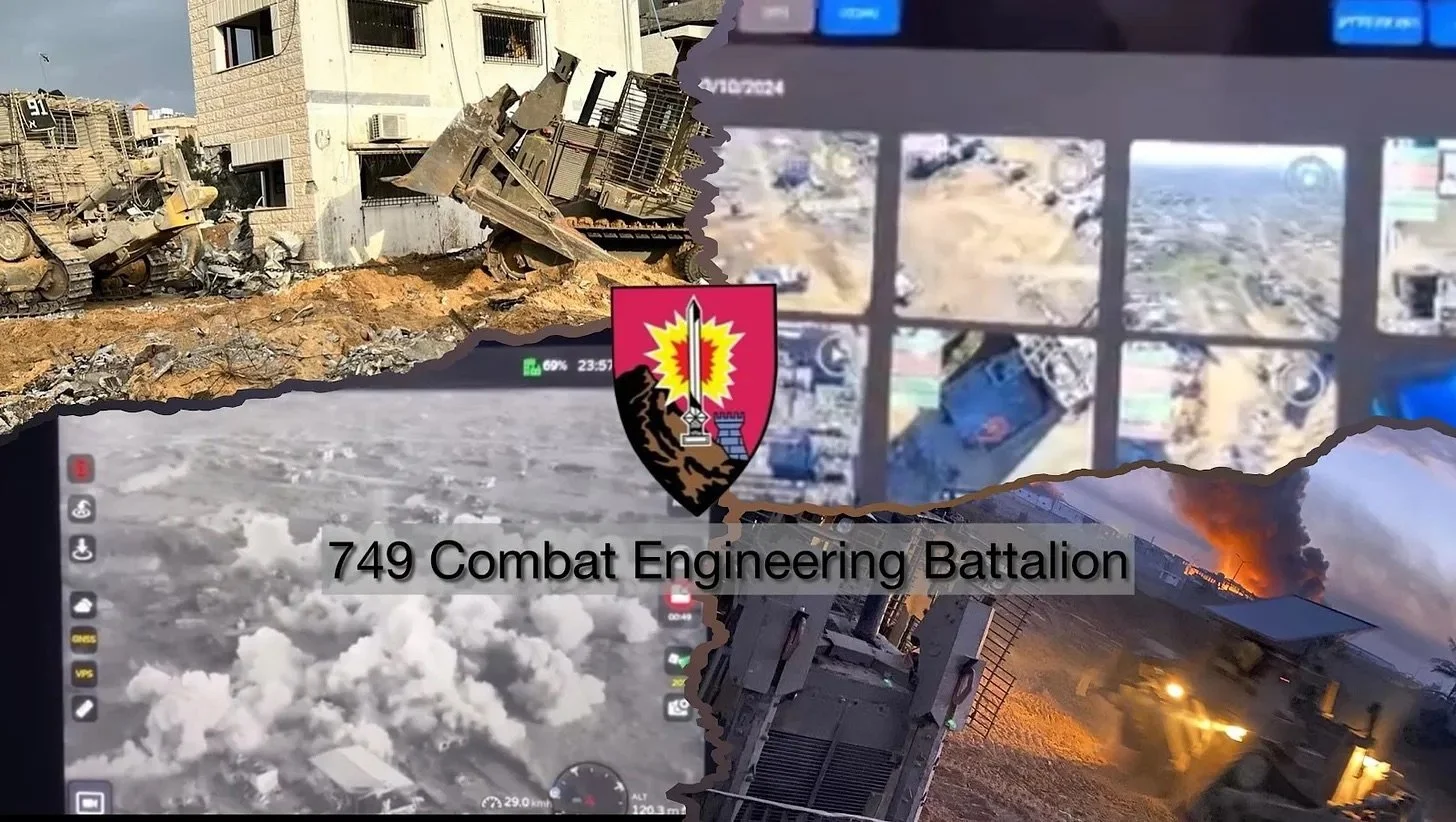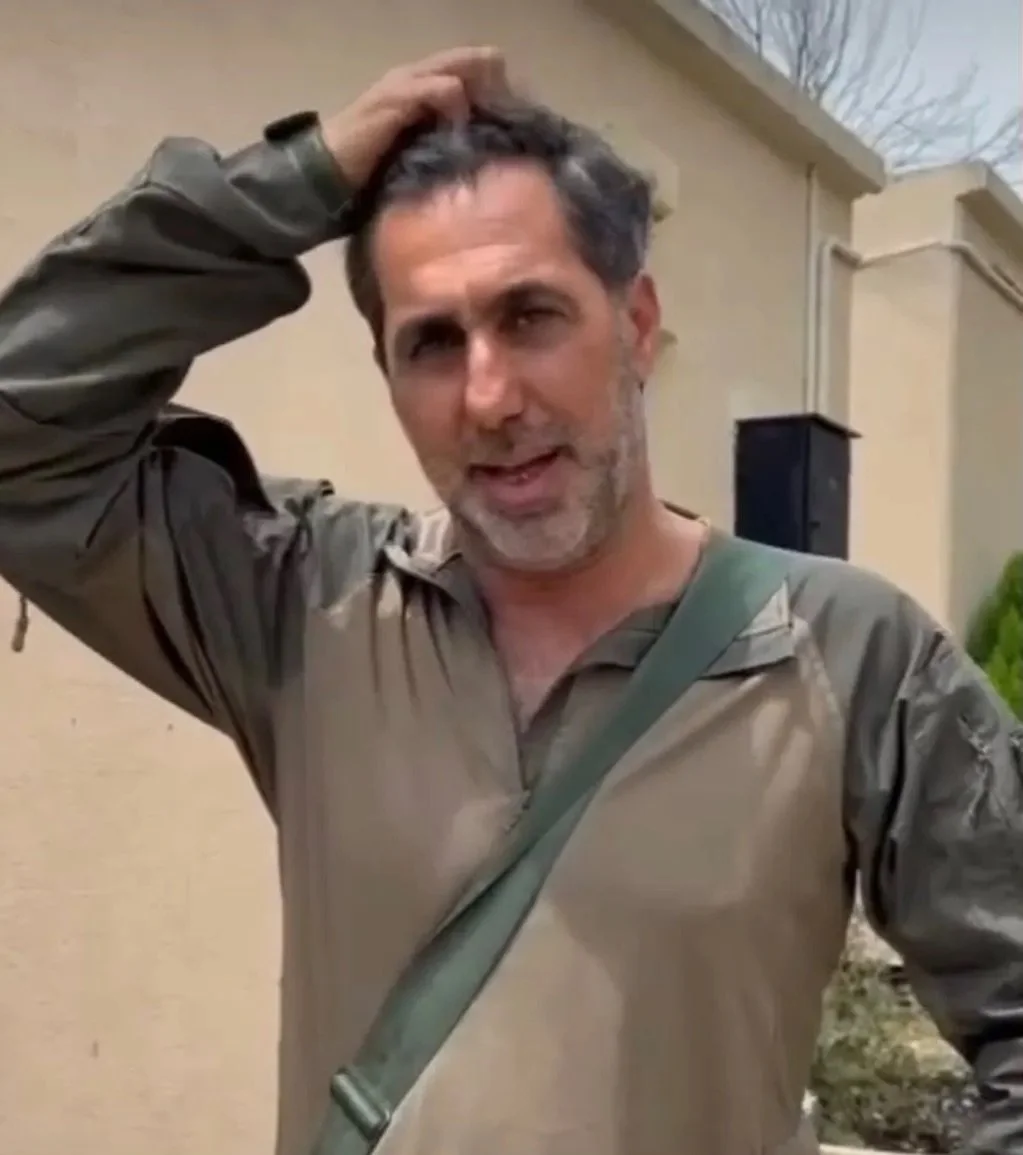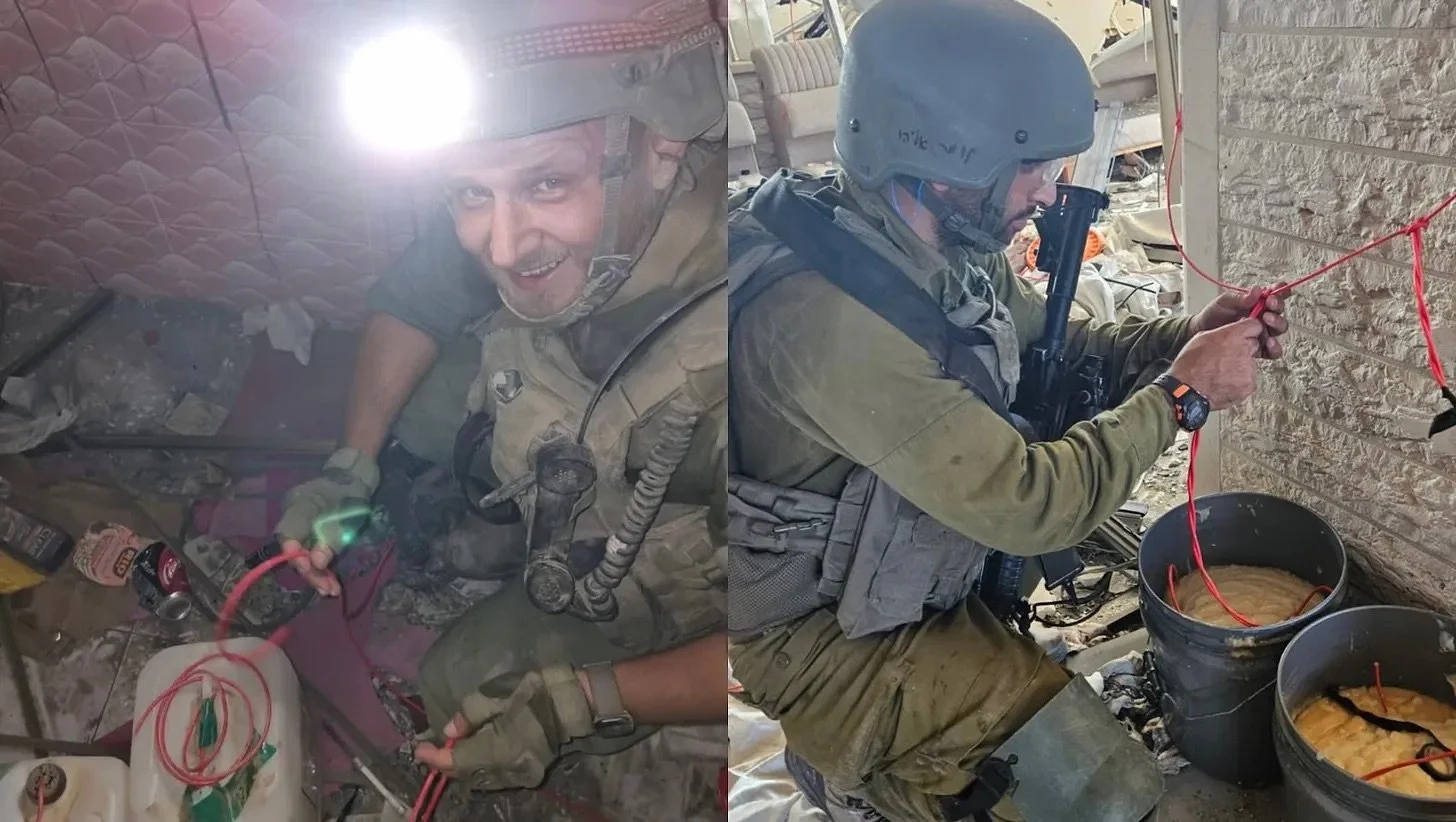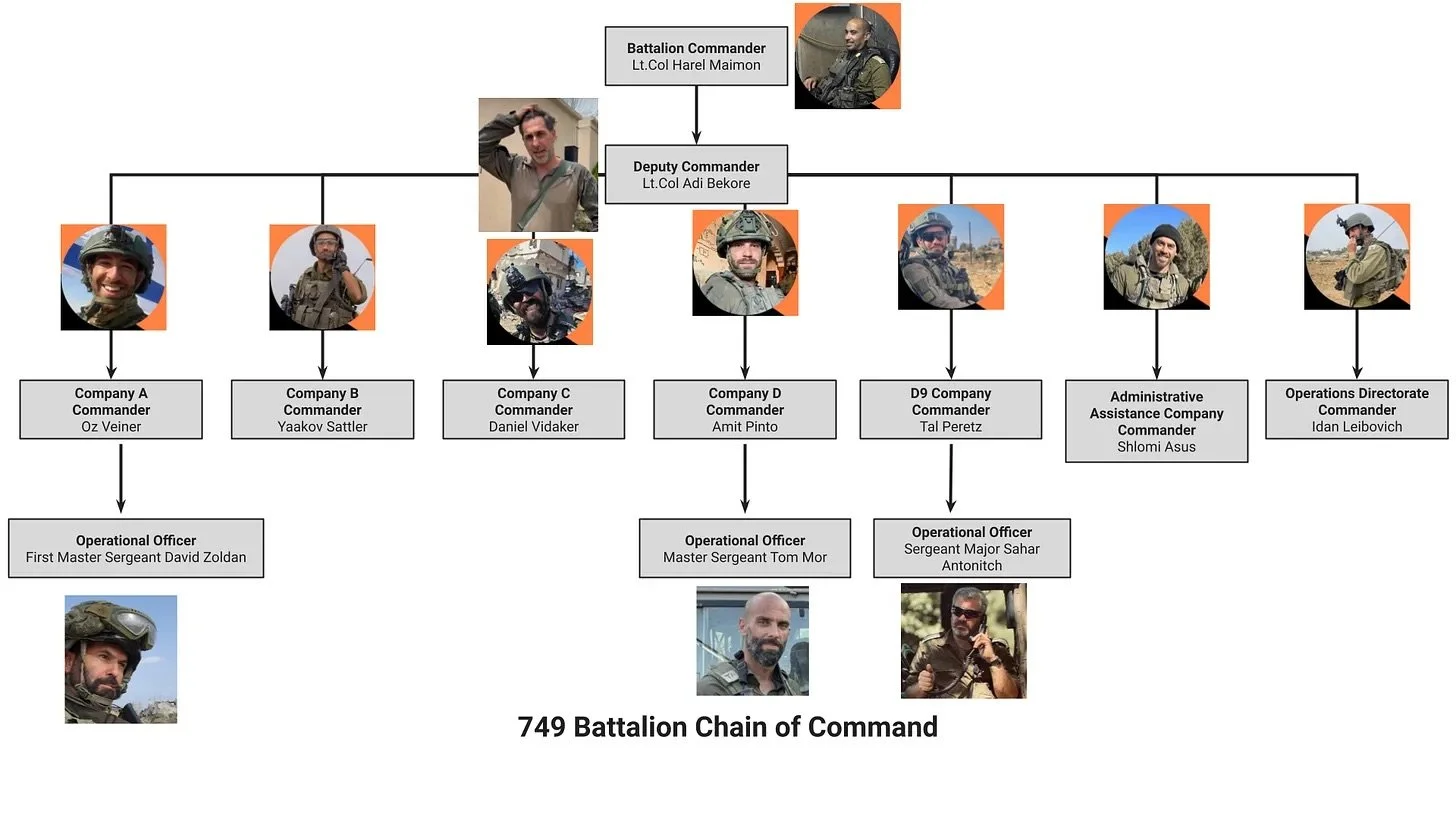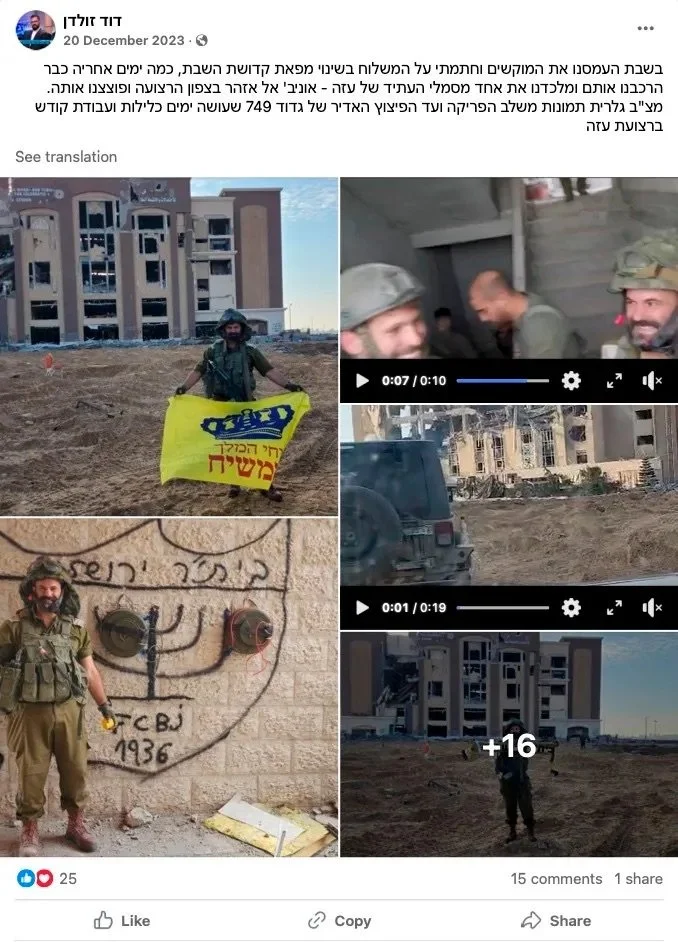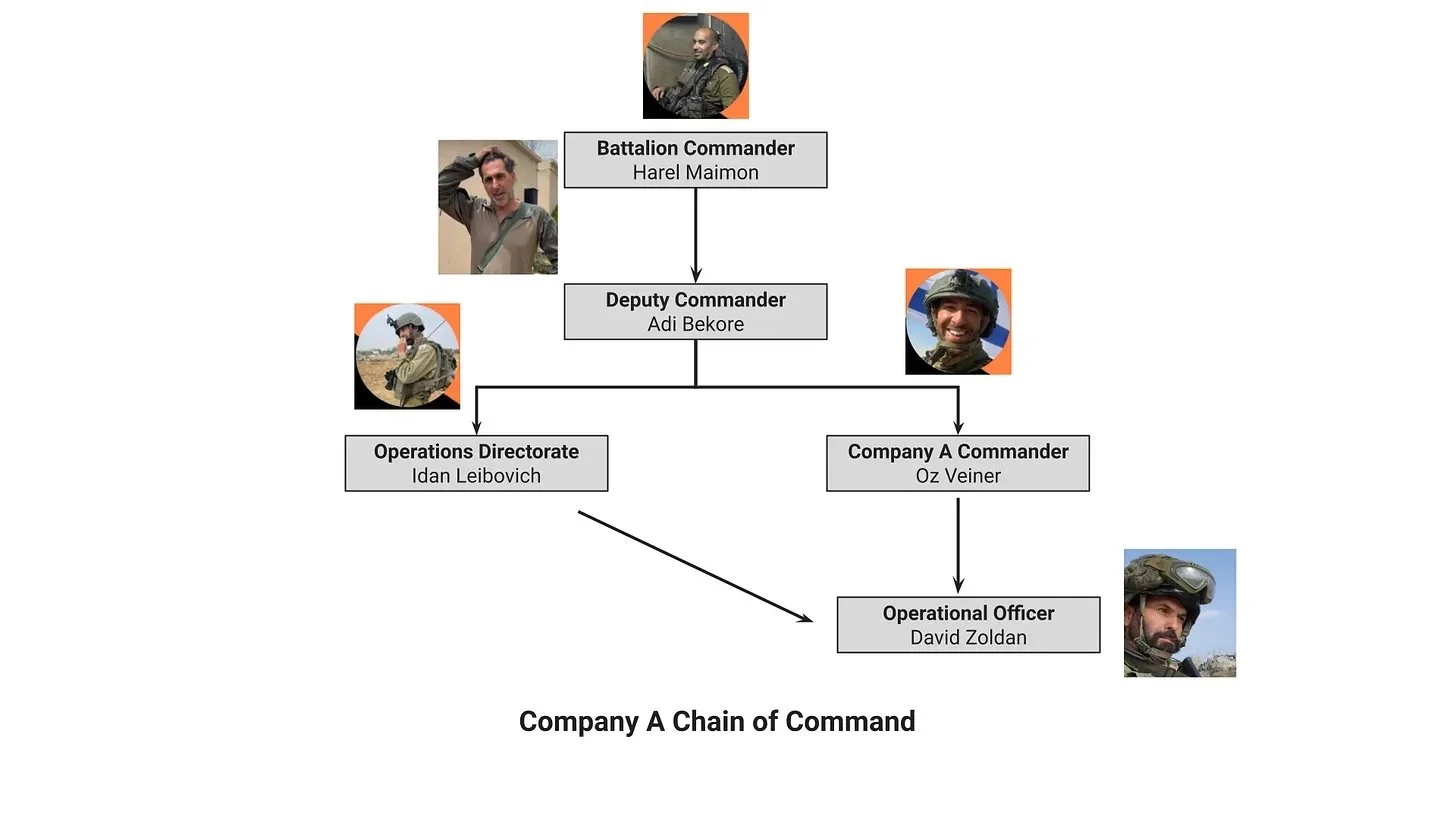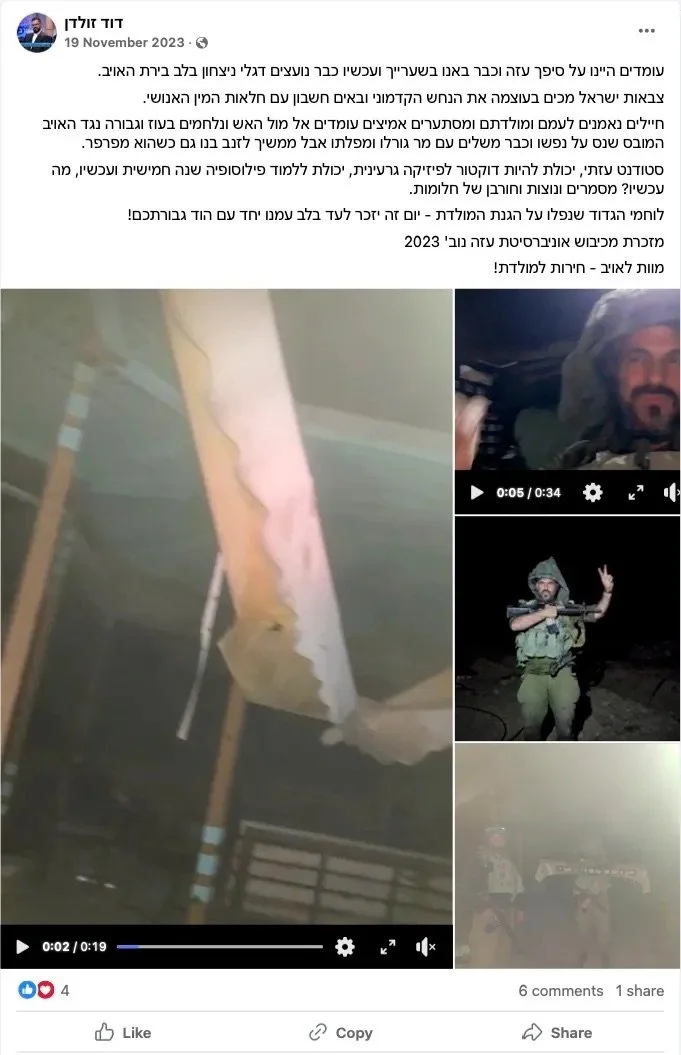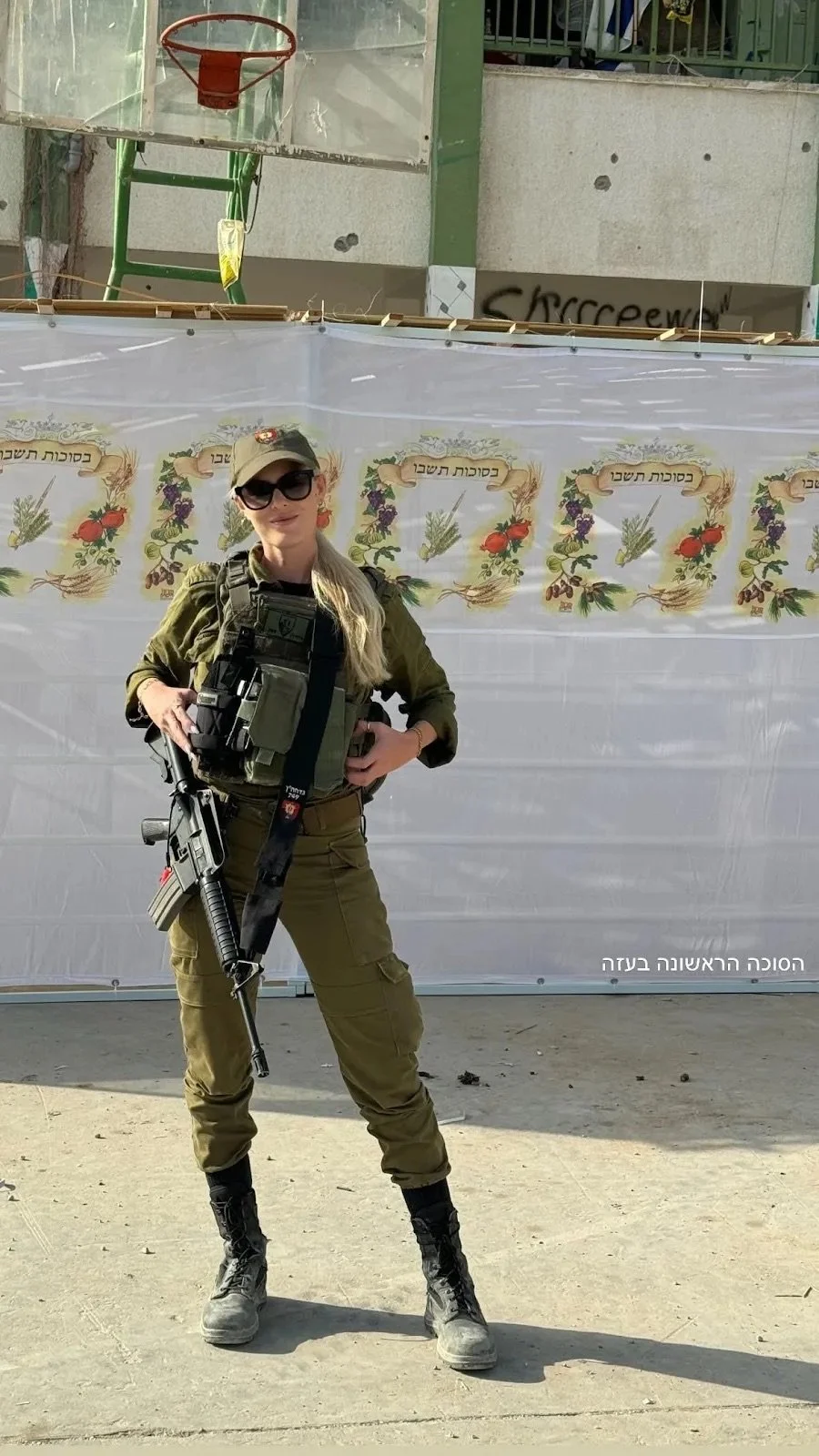"Our Job Is to Flatten Gaza. No One Will Stop Us."



Graphic: Younis Tirawi.
Inside one Israeli battalion's yearlong mission of destruction
by Younis Tirawi and Sami Vanderlip
In mainstream Western media, the coverage of Israel’s year of scorched-earth destruction often touches on the victims and events happening in Gaza in the passive voice. Death and destruction befall Palestinians the way a city suffers from a hurricane or an earthquake—though in those cases, the media has little difficulty identifying the natural disaster as the cause of the destruction. When it comes to Gaza, buildings mysteriously explode and people die. Rarely do we see the Israeli military identified as having carried out the act—and never do we see individual members of the military named and identified, their actions described in detail, broken down by unit and task. In fact, doing so in Israel is illegal.
The stated rationale for that censorship is operational security, but according to a report from Israel’s Channel 13, the real aim is to dodge accountability for war crimes. If that’s true, the soldiers themselves work against this cover up on a daily basis—posting endless photos, videos, and montages from the homes and neighborhoods of Gaza they are razing. That’s where this investigation begins.
Journalists Younis Tirawi and Sami Vanderlip have managed to find and archive all the Instagram stories and daily posts shared by the soldiers of one key unit, Israel’s 749 Combat Engineering Battalion. They’ve mapped out the structure of the unit and identified the individual soldiers and officers involved, along with their various roles in operations. They have tracked the activities of each company in the battalion, including what they were doing, when, and where, as the force shred their way through Gaza.
The mission is nothing less than a systematic, concerted, and deliberate effort to erase the intellectual, cultural, and social future of the Palestinian people. “Our job is to flatten Gaza,” the soldiers of the official D9 company of the battalion wrote on their Instagram page. They added, accurately: “No one will stop us.”
You likely heard about some of the atrocities described in this article in real time and if you follow our work here at Drop Site, learned of the impact on the population. But now you can see it from the perspective of those carrying out and reveling in them.
The following is a thorough account of the acts committed by the 749 battalion, complete with the evidence they post themselves. These are not just isolated events, but represent a pattern that runs through the very heart of the Israeli military—a sadistic attitude toward the civilians of Gaza, whose futures they have been tasked with blowing up or flattening. If sadistic sounds harsh, read through this dispatch and ask yourself if it’s not, in the end, too soft of a description.
“Now go, attack the Amalekites and totally destroy everything that belongs to them. Do not spare them; put to death men and women, children and infants, cattle and sheep, camels and donkeys.”
This is what the deputy commander of Israel’s 749 Combat Engineering Battalion, Lieutenant Colonel Adi Bekore, posted on his personal Facebook account on October 9, 2023, just two days after the Hamas attacks of October 7. Numerous soldiers from the battalion he had command over liked the post. It is a quote from a biblical passage in which the biblical nation of Israel is commanded to attack the Amalekites, an ancient biblical nation that was a recurrent enemy of the Israelites. Israeli Prime Minister Benjamin Netanyahu also invoked this reference early in the war—a moment cited by South Africa in its case to the ICJ as a piece of genocidal rhetoric:
Lieutenant Colonel Adi Bekore. Source: @gdud749 on Instagram
Like much of the rhetoric coming from all organs of the Israeli military since its assault on Gaza started, these words served as a stark warning of what was to come. One year later, countless homes, schools, hospitals, and residential buildings have been bombed and destroyed. 42,718 people have been killed, according to the most recent Gaza Health Ministry figures. The actual figure is certain to be a lot higher: An estimated 10,000 people are buried in the rubble, and the official count doesn’t include those indirectly killed by Israel’s assault on Gaza
Soldiers from Israel’s 749 Battalion planting explosives, September 19, 2024 in south Gaza City. Source: @gdud749 on Instagram
Over the past year, the 749 Battalion has played an indispensable role in Gaza. Its soldiers are reservists—alumni of the combat engineering corps, which trains soldiers in demolition. The battalion comes in after combat units, toppling buildings and homes that managed to survive air strikes.
The 749 Battalion was among the first to enter the strip through the Netzarim corridor, the four-mile-long road separating Gaza City and Deir al-Balah that Israel occupied early in the war in order to divide the north and south of Gaza. After helping to cement control of south Gaza City, including the Netzarim corridor, the battalion later advanced into areas like Shuja’iya in Gaza City, the Bureij Refugee Camp in Central Gaza, and even Rafah.
At the time of writing, the 749 Battalion is operating in northern Gaza and Jabalia, where, even following Hamas leader Yahya Sinwar’s killing in southern Gaza, Israel’s campaign has intensified to the point of executions and depopulation. There, the battalion is seemingly racing to destroy as many buildings as possible. As one soldier put it, “We will leave them nothing!”
The images in this investigation come primarily from the group’s own social media page, which Drop Site News gained access to, as well as the personal accounts of dozens of soldiers from various companies within the battalion. By stitching together the information shared within the battalion, we were able to clearly map out the unit’s organizational structure and identify over a hundred of its members.
Drop Site News was also able to use the videos to determine the areas where the 749 Battalion was operating and document their activities in the Gaza Strip in detail. They are not the only battalion tasked specifically with demolitions—if it was, Gaza wouldn’t look the way it does—but a close examination of its daily activity offers a rare window into the Israeli operation on the ground in Gaza.
749 Battalion’s chain of command. Credit: Drop Site News
December 2023: Blowing Up Al-Azhar University
“Hiroshima and Nagasaki combined”
In December 2023, Company A of the 749 Battalion was tasked with rigging up the south Gaza City campus of Al-Azhar University with explosives and detonating them, reducing Gaza’s second-largest university to rubble. "On Shabbat, we loaded the mines, and I signed off on the shipment with a modification due to the sanctity of Shabbat,” First Master Sergeant David Zoldan, the operational officer of Company A of Israel’s 749 Battalion wrote in a Facebook post on December 20. “A few days later, we assembled them and booby-trapped one of Gaza’s symbols of the future—Al-Azhar University in the northern part of the strip—and blew it up.”
Screenshot of David Zoldan’s Facebook post on December 20, 2023.
An operation of this size would generally have required sign-off not just from the deputy commander, Bekore, but also from the battalion commander.
The current chain of command for Company A. Prior to Maimon, the commander was Lt. Col. Guy Tyeeb. Credit: Drop Site News.
Zoldan—a reservist who normally works as a journalist at ICE, a local Israeli news outlet—attached several photos and videos of the entire operation “from the unloading stage to the massive explosion.” In one of the videos, he cheers as the three buildings of the university campus are prepared to be blown up. “This is the explosion before redemption. December 2023.”
As the university is blown up, Zoldan tells his fellow soldiers, “Hiroshima and Nagasaki combined, did you see?!”
Zoldan did not provide a military justification for the explosion and the Israeli military have not reported to have found anything at this campus. In a chilling post ahead of the explosion, Zoldan wrote on his Facebook page on November 19, 2023: "Gazan student, you could have been a doctor of nuclear physics, you could have studied philosophy in your fifth year, and now, what now? Nails and feathers and the destruction of dreams."
The 749 Battalion, he wrote after the explosion, “is working day and night and performing holy work in the Gaza Strip.”
Other soldiers from the battalion made no effort to conceal their intentions, gleefully mocking the destruction of civilian and educational property. Maya Radoszkowicz, another soldier in the 749 Battalion, was among them. She filmed the explosion of Al-Azhar University, captioning it, "Goodbye to higher education in Gaza” with an emoji of hands in the form of a heart.
She is one of 27 soldiers Drop Site News identified as being deployed to blow up Al-Azhar University. This group also includes Royi Wickes, who fights with an American-flag patch sewn on his sleeve and was involved in planting the explosives that led to the destruction of the institution.
Maya Radoszkowicz with the caption of "First Sukkah in Gaza". Source: @maya_anaisabelle on Instagram.
The destruction of the university campus by the 749 Combat Engineering Battalion, a reserve unit within the IDF’s 5th Brigade, was a reflection of the unit’s special mission: to destroy the livelihood and symbols of Gaza’s future—from mosques, shops, universities, and even homes.
November-December 2023: Creating the Netzarim Corridor
Over several weeks in November and December 2023, Israel used its siege of Gaza to justify the total annihilation of the civilian infrastructure in towns and suburbs throughout the strip. The military not only worked to establish a half-mile “buffer zone” inside the Gaza border by demolishing homes and buildings. It also flattened a four-mile-wide stretch in the heart of Gaza separating the north from the south of the strip.
Very little is allowed to be published about the demolitions done to establish the Netzarim corridor due to Israel’s stringent military censorship rules. Only in February was a reporter with Israel’s Channel 14 able to publish a video investigation revealing the “latitudinal highway,” with significant razing and paving underway.
But multiple demolition videos posted by members of the battalion show them paving the corridor through Gaza. They played such an integral role in this effort that the main road dividing North Gaza from the South, in the Netzarim corridor, was named Road 749, in recognition of the battalion’s work in constructing it amid the ruins of Palestinian homes and properties.

